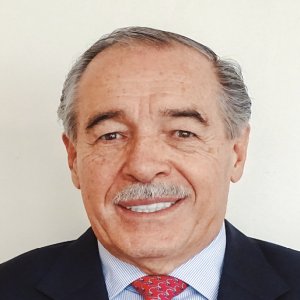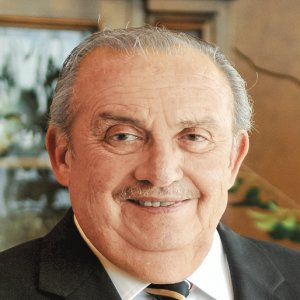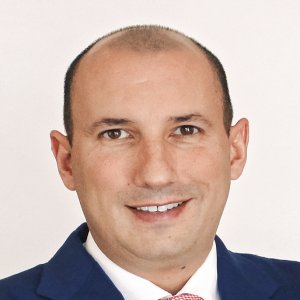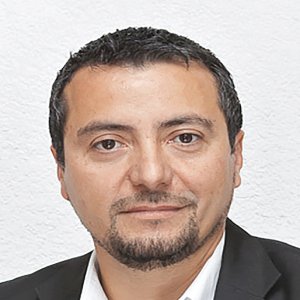Rigged for Power, Range

STORY INLINE POST
Q: What are the main performance parameters you take into account when choosing a helicopter?
A: The most important parameter is performance because we operate in high-altitude conditions. Eighty percent of Mexican terrain has high-altitude conditions so we need helicopters with a lot of power. Our operations have changed. Oilrigs are getting farther from shore and our helicopters need more range to comply with their functions. Helicopters need more power to carry more fuel farther, which led us to acquire the Airbus H175.
Throughout our history, we have been faithful clients of Airbus Helicopters. We have had a good working relationship with them and they have helped us to grow. However, there are several helicopter models and brands that could be used for transportation services for the oil industry. Most companies use Agusta, Airbus, Super Puma and Sikorsky aircraft. It usually depends on the mission they want the helicopter to complete.
Q: What characteristics does the H175 have that make it suited to the oil industry?
A: Our H175 is the first helicopter of this model on the entire continent and the fifth in operation in the world. It has top-notch technology that sets it apart from all other helicopters, with systems that are unique. It is reliable with a good range, power and capacity and the price is fair when you consider everything the helicopter has to offer.
The H175 was designed with a different philosophy. Airbus Helicopters wanted to create a very special aircraft so the development phases of components were strict. The avionics system it installed has an autopilot and a 4-axis control system. Normally, autopilots work with a three- axis system. The fourth axis permits the helicopter to hover using the autopilot. All the maps are connected so the flight can be programmed by route or destination and the helicopter will automatically fly there, reach the exact destination and hover over it. Technically, pilots do not have to do much since it can also land automatically if you have the exact coordinates of the landing strip but in our case our pilots do land the aircraft. The H175 also has automatic approaches to rigs, even in bad weather when visibility is diminished.
The range delivered by the H175 also is outstanding. We have flown up to 235NM on a roundtrip carrying three passengers, for a total of over 400NM at a maximum speed of 160kts. The H175 complies with the strictest quality standards and is powered to perform Category 1 takeoffs, which means that if during takeoff an engine fails the helicopter keeps climbing, rather than just maintaining altitude at the same level. With one H175 in Tampico and another in Ciudad del Carmen, we can cover the entire Gulf of Mexico.
Q: What made Transportes Aéreos Pegaso choose the H175 over other models?
A: We were one of the initial companies to order this model six years ago when it was first announced. Even though this particular helicopter model was not needed at the time, we knew someday the Mexican market would be in need of its performance standard. Today, delivery time for the H175 is 18 months.
We only have one H175, which is used by WesternGeco, but we expect the second unit to be delivered in November 2017. Clients are very happy with this aircraft, since the broader range allows them to fly to their vessels without having to move the ships closer to the shore, saving money. Even though the H175 is more expensive than other aircraft in the fleet, the cost per seat does not increase much. Taking 16 passengers on the H175 costs almost the same as taking 12 passengers on the H155.
Besides performance, the H175 complies with new regulations that will be put in place in the coming years and which will demand higher certification standards than those used by European Aviation Safety Agency (EASA). They have been applied in the North Sea since 2015.
Q: What competitive advantages does Airbus Helicopters offer when compared to other helicopters?
A: Deciding which helicopter offers the most competitive advantages depends on the use. From our perspective, Airbus works because of its philosophy of offering excellent engineering and work quality with components that last longer in terms of flying hours. They are well made and well designed and the price reflects this.
In the case of Bell Helicopter, the components are more economical but you have to change them every 1,200 flying-hours. In the case of our helicopters we replace components after 3,700 flying-hours. Buyers have to analyze every type of helicopter in detail, according to the mission intended. Costs are almost always comparable long-term.
Q: How do you address your maintenance needs with so many bases?
A: We have bases in many cities, like Dos Bocas and Matamoros. For heavy maintenance tasks we fly our helicopters to Ciudad del Carmen. In Dos Bocas and Villahermosa, we provide light maintenance services, while medium maintenance services are done in Matamoros. Regardless of the services offered at each location, all our bases have mechanics at all times. Helicopters cannot fly without correct maintenance, which is at least 1.3 hours of maintenance applied per flight hour.
Q: In what ways will Mexico’s reforms change the transportation market for oil in the country?
A: Helicopter transportation services by foreign companies will not appear in the near future. The governmental reforms offered the possibility to extract oil but the aviation segment is not open to everyone. Coasting is still not permitted by law, so the only possibility for foreign companies to enter the helicopter transportation market for the oil industry is to buy an existing company or to initiate a joint venture.
Q: How is Transportes Aéreos Pegaso’s planning to maintain or diversify its client portfolio?
A: Unfortunately, we do not know what will happen to our business with PEMEX, which is leading us to diversify and rely more on the private sector. PEMEX used to be responsible for 60 percent of our business operations, but now 30 percent of our operations are for the private sector, 40 percent for the Federal Electricity Commission (CFE) and the remaining 30 percent is with PEMEX. We expect to grow our business with private companies rather than with PEMEX. The results of Round 1.4 for deep-water drilling will bring new business but that will not materialize until 2018.
We are diversifying and will start building a facility in Toluca. The company has three Lear Jets and we want to increase our presence in the executive aviation sector. Even though it is a market with many competitors we believe there is enough demand to make it a profitable business. We plan to have the facility ready by the end of 2017 and once it is operational Transportes Aéreos Pegaso will move its offices there.
We expect this to help us diversify our client portfolio. In five years we expect our clients to be 50 or 60 percent from the private sector, mainly for offshore operations. The company is planning to maintain its current operations with CFE. We would like them to be around 25 percent of our business, and the remaining percentage will be with PEMEX. Also maintaining our business with TransCanada is important for us. We are the only Mexican company that passed all the certifications they asked for.























